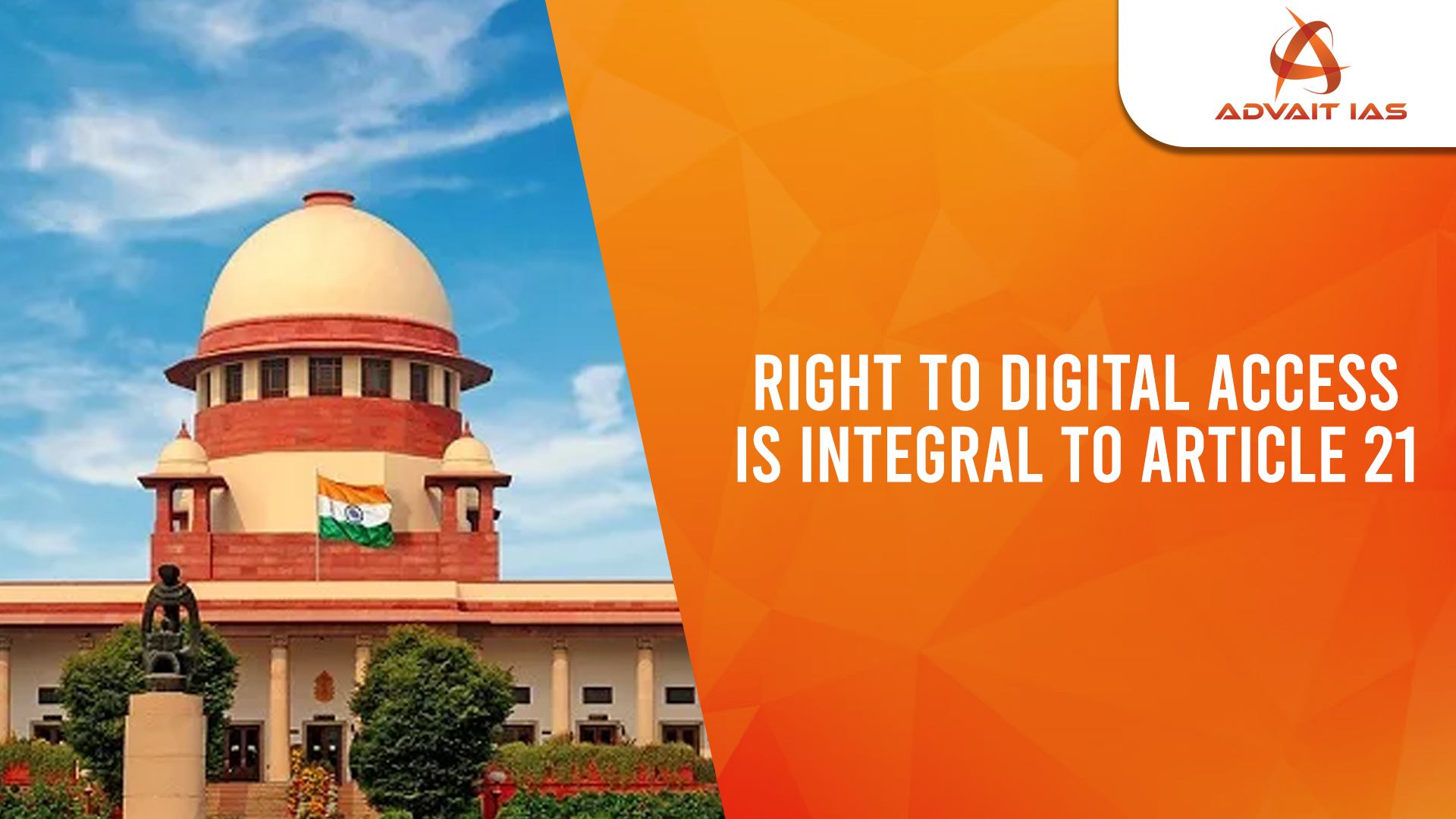The Supreme Court (SC) of India in the case Amar Jain v. Union of India & Ors, 2025 ruled that inclusive digital access to e-governance and welfare systems is an integral part of the fundamental right to life and liberty, and issued directions to make the digital Know Your Customer (KYC) process more accessible for persons with disabilities (PwDs),
Background
- Digital KYC processes often involve:
- Real-time face capture.
- Biometric verification (fingerprint/iris).
- Eye movements or facial gestures.
- These exclude individuals with:
- No eyes or limbs (acid attack survivors).
- Limited facial control or movement.
- Blindness or other visual impairments.
Purpose of the Ruling
- To ensure digital KYC processes are accessible to:
- Visually impaired persons.
- Persons with low vision.
- Persons with facial disfigurements or motor impairments.
- To remove discriminatory biometric requirements (e.g., live facial recognition, blinking, head movements).
Aims of the Judgment
- Promote inclusive digital infrastructure across banking, governance, education, and healthcare.
- Ensure that no citizen is denied access to digital services due to disability or disfigurement.
- Uphold digital accessibility as a constitutional right.
Significance
- Establishes digital access as a component of the Right to Life (Article 21).
- Strengthens the intersection of technology and fundamental rights.
- Encourages universal design standards in public and private digital platforms.
- Calls for structural reforms in policy-making, fintech, and governance portals.
- Reinforces India’s commitment to SDG 10 (Reduce inequality) and UNCRPD (United Nations Convention on the Rights of Persons with Disabilities).
Key Judicial Directions
- RBI to formulate alternative KYC methods for PwDs.
- All regulated entities (banks, NBFCs, fintech firms):
- Must redesign apps/websites to follow accessibility standards.
- Should consult accessibility experts during development.
- Appointment of Nodal Officers in each department to monitor and implement accessibility compliance.
- Government to ensure digital platforms comply with:
- Rights of Persons with Disabilities Act, 2016.
- Information Technology Act, 2000 (Section 43A – reasonable security practices).
Supporting Data & Reports
- As per Census 2011: Over 2 crore persons in India live with some form of disability.
- Only 27% of disabled persons have access to banking facilities.
- As per the World Bank, digital exclusion amplifies poverty and inequality in developing countries.
International Perspective
- UNCRPD Article 9: Ensures accessibility to ICT for persons with disabilities.
- The ruling is aligned with UN SDG Goal 10: “Reduce inequality within and among countries.”
- European Union Accessibility Act (2019) sets a precedent for inclusive digital design in public services.
The SC ruling is a landmark for digital rights and disability justice in India. It shifts the narrative from “reasonable accommodation” to “constitutional obligation”. Sets a precedent for all digital service providers to ensure no one is left behind in the digital economy.






